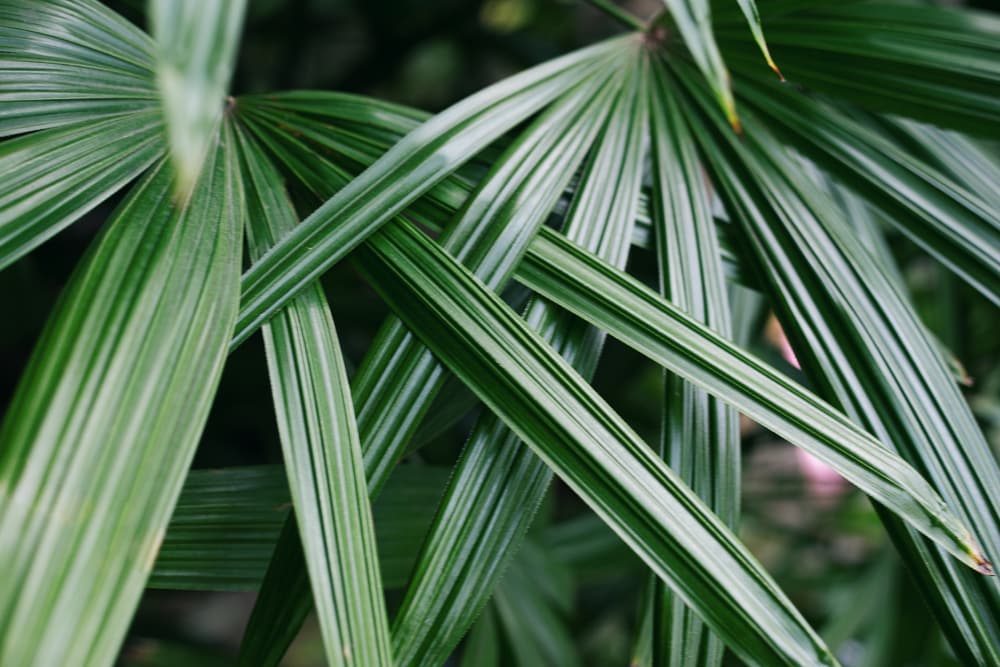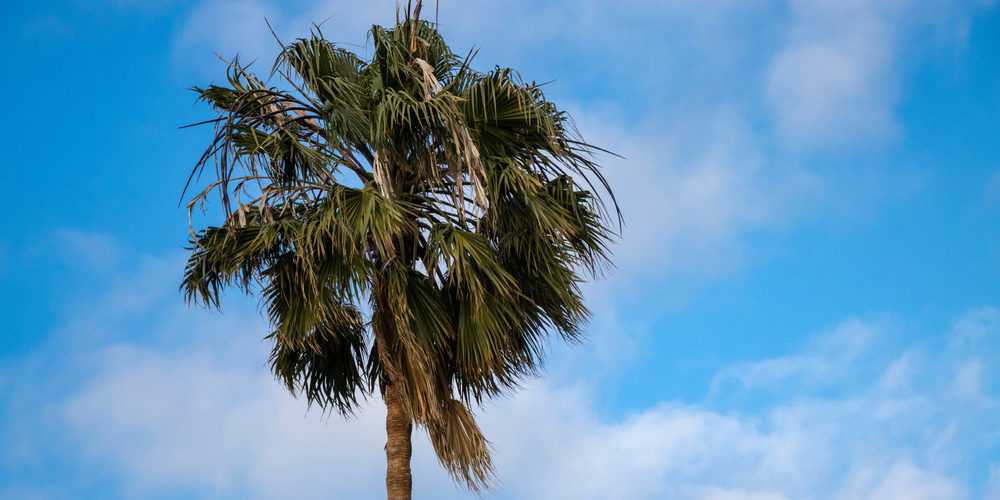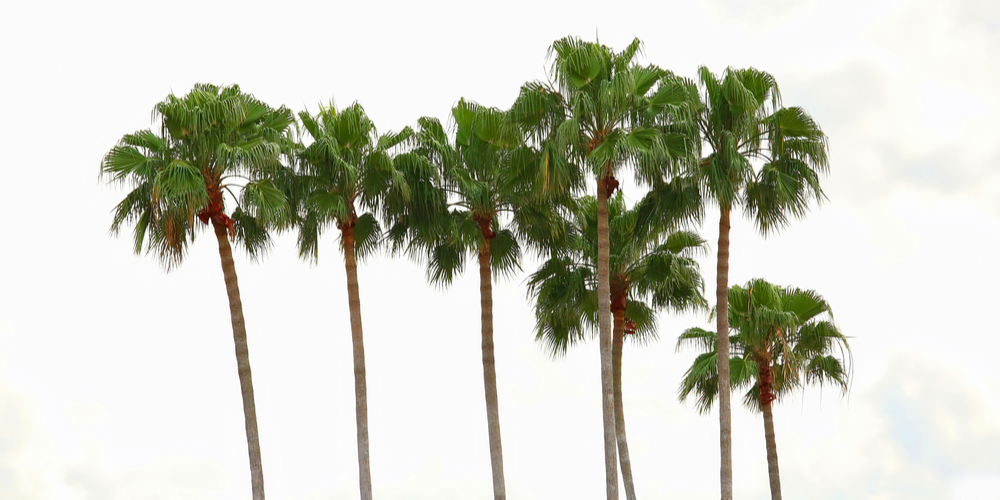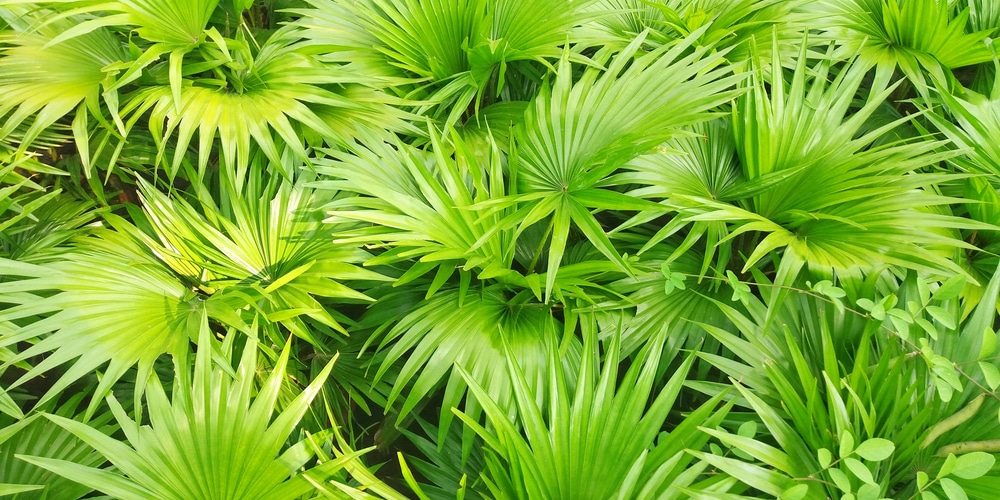When you think of palm trees, you tend to picture them on the beach with a calm ocean in the background. It is common to see palm trees in warmer coastal towns and cities. But what about palm trees in areas with traditionally cooler climates? Or are there areas more known for the mountains and tall pine trees rather than the ocean?

It turns out that palm trees do grow in cooler climates and away from the coastline. The state of Washington in the Pacific Northwest is a prime example of that.
This ability is due to the unique climate of the picturesque Pacific Northwest. The region is home to the Cascade Mountains, which start in Vancouver Island and run east of Seattle, Washington, past Portland, Oregon, and ends in Northern California. The mountain range is significant because it vastly affects the climate and weather patterns in the region.
The climate to the west of the Cascades is usually mild during the winter and the summer, experiencing neither extreme cold nor heat for the most part. But if you find yourself on the eastern side of the Cascades, then you will find that the summers can be hot and the winters incredibly cold.
Because of this, western Washington has a climate conducive to growing all types of palm trees, including the California Fan palm tree, Canary Island date palm tree, and Chinese Fan.
Some other types of palm are the True Date palm tree, European Fan palm tree, Mexican Fan palm tree, Queen palm tree, and, of course, the Saw Palmetto palm tree. These various tree types can be found on the western side of the Cascades.
Palm Tree Varieties in Washington State
Here is a list of palm trees that can grow and flourish on the western side of Washington state.
California Fan palm tree
The California Fan palm tree, also known as the Desert Fan palm tree, flourishes in drier climates. Desert Fans grow naturally in the desert regions of the southwestern United States but are used for landscaping purposes in Washington. It is most commonly used in public landscaping such as parks and requires a lot of space to flourish.
Canary Island Dates
If you decide that you would like to plant a Canary Island Date palm tree to impress your friends, be prepared to nurture it for as long as you want to keep staring at it. This is because Canary Island Dates require a lot of maintenance.
Canary Island Dates need to be watered often, fertilized annually, and only grows about 10 feet high within the first 15 years. The trees are naturally deficient in potassium and magnesium, which is why it requires a lot of care.
A South Florida favorite, this tree has a weeping aesthetic that provides a lot of privacy in residential areas, so your neighbors have more trouble spying on you.
The True Date palm trees produce date fruits and grow over ten feet tall. They can withstand wide temperature fluctuations and survive temperatures down to 15 degrees Fahrenheit.
European Fan palm
European Fan palm trees can survive severe droughts and extreme cold, down to 10 degrees Fahrenheit. The leaves will freeze and fall off, but the trunk will survive and bloom again.
Mexican Fan palm
The Mexican Fan palm tree coincidentally has a scientific name of Washingtonia robusta. But, despite its common name, it is indigenous to Mexico and many southern states in the U.S.
Queen palm trees
Queen palm trees can grow up to 50 feet tall with a canopy spanning 25 feet. The Queen is the classic style of palm tree that you know and love.
Saw Palmetto palm
The Saw Palmetto palm tree can make honey. It can also survive temperatures as low as 0 degrees Fahrenheit.
Palm Trees in Washington State: Conclusion
If you are a big fan of palm trees and are too hesitant to move to Washington state because you are worried that there will not be any around, you can take solace in the fact that there are plenty around if you stay on the west side of the Cascade Mountains.


